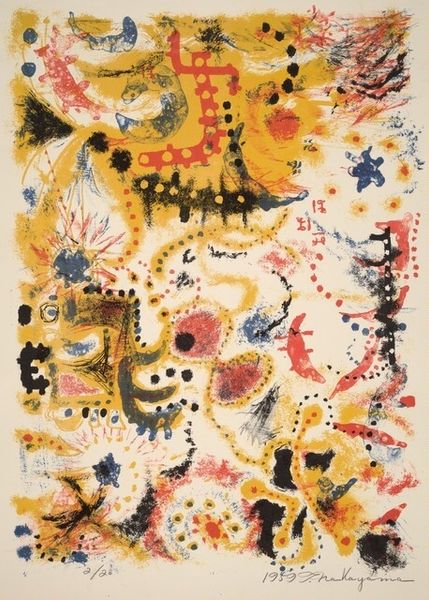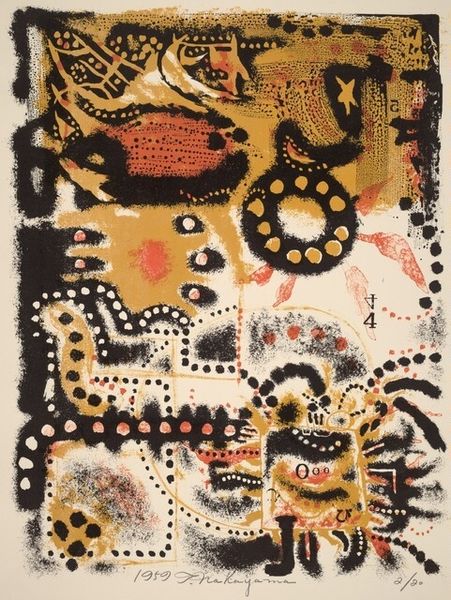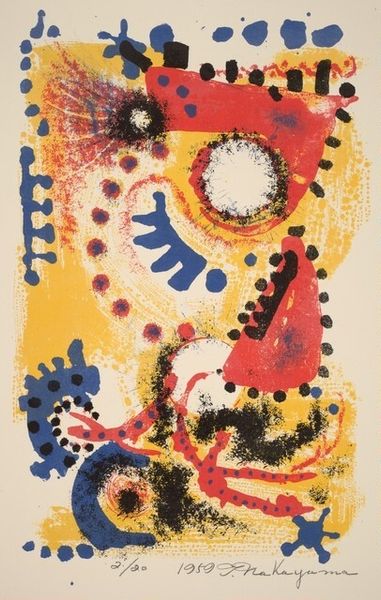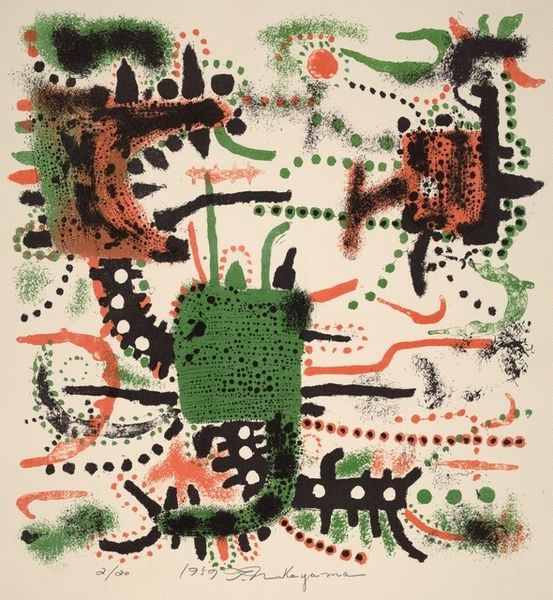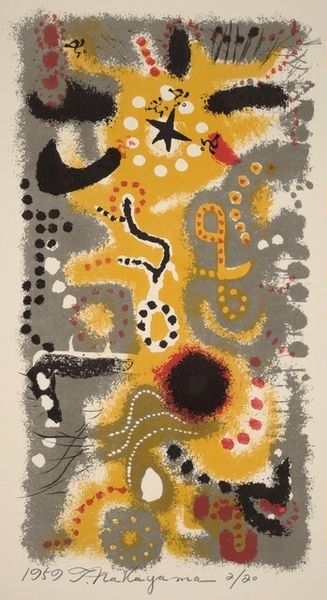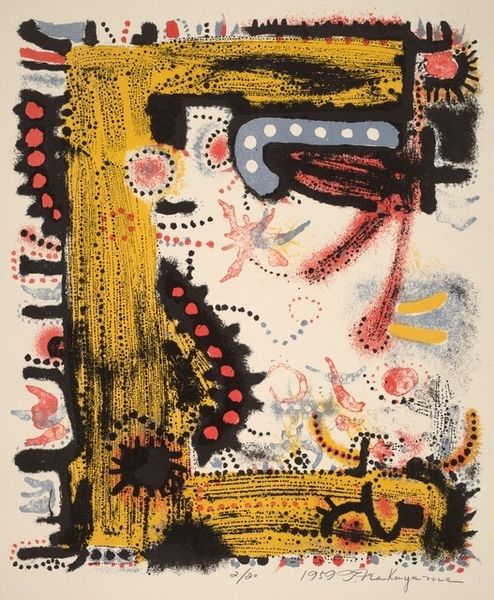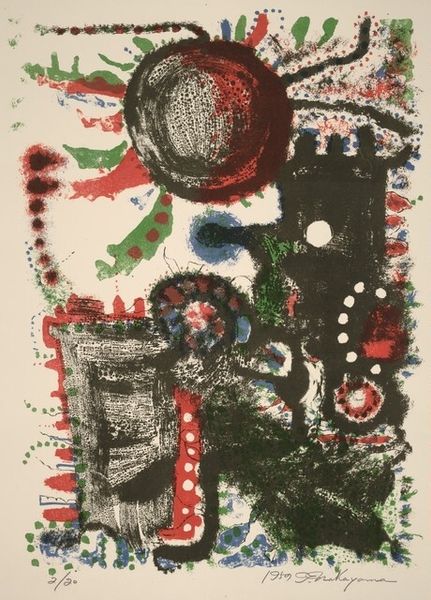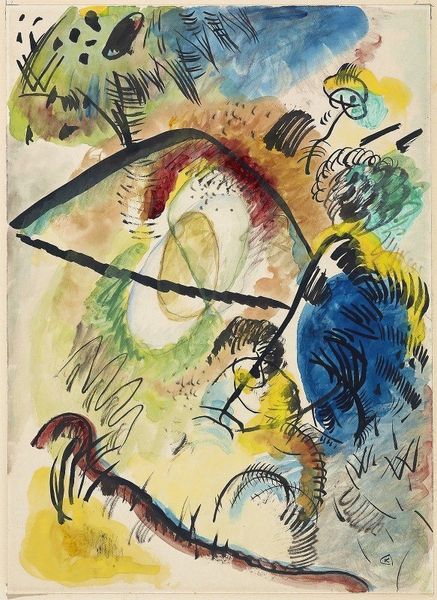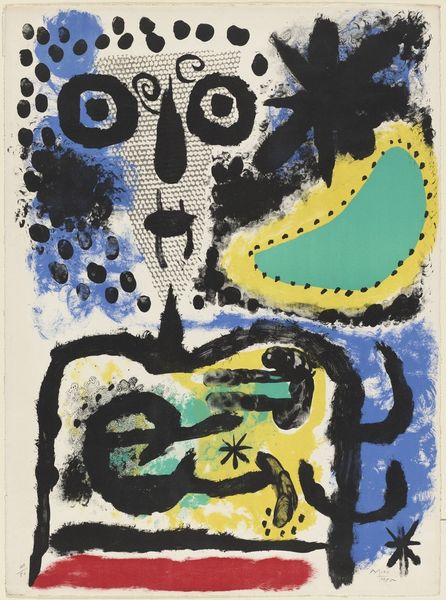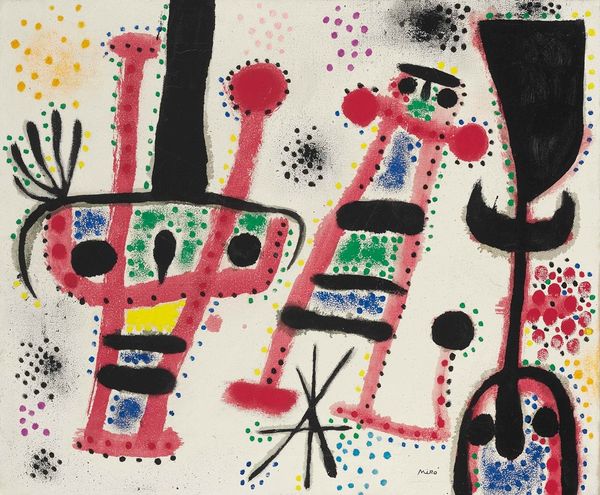
Copyright: National Gallery of Art: CC0 1.0
Curator: Tadashi Nakayama’s "Rappa-Shu (Trumpeter) X," a print from 1959, presents us with an enigmatic dance of form and color. It practically vibrates off the paper, doesn’t it? Editor: Vibrate is the word. Initially, it's visually chaotic, but intriguing. My eye struggles to find a focal point. What strikes me most are the textures and the sense of how this was crafted—almost like looking at layers of ink, distinct yet overlapping. I can feel the hands and the press at work, the specific kind of labor embedded into abstraction. Curator: Yes, layers upon layers, creating a landscape almost, though completely abstract. There’s an organic feel to it, with shapes that hint at natural forms – perhaps stylized flowers or seeds – scattered across a fantastical garden. What do you make of his palette here? It's an unexpected combination of vibrant and subdued. Editor: Absolutely. We see yellows juxtaposed with these deep blacks, offset by dashes of green and red – a real material contrast. The yellows appear like traces of mineral pigment, almost leaching from the black blots which in turn resemble iron filings or something similar. The work itself then plays on the social contrast of precious vs mundane or ephemeral materials and resources. Curator: The longer I look, the more it reminds me of a secret language. These aren’t random marks. They're arranged, repeated, responding to each other across the space. Like a constellation of unknown signs! Maybe this links back to Nakayama's interest in traditional Japanese aesthetics, reinterpreted through a modern, almost psychedelic lens. It feels ancient and futuristic all at once. Editor: A language is a neat way to consider it. From my viewpoint, the materiality pushes the work away from pure expression toward something more coded – like the printmaking itself establishes a mechanical mode of communication that we could further place into the landscape of Post-Impressionist values. Curator: So, while seemingly abstract, "Rappa-Shu X" hints at these narratives, playing between organicism, the artist's inner landscape, and cultural traditions, doesn't it? Editor: Indeed, and crucially, that its physicality shapes these notions – our access to even these abstract ideas. It's a potent reminder of the hands and technologies behind the art object, even when, perhaps especially when, those objects appear spontaneous and intuitive.
Comments
No comments
Be the first to comment and join the conversation on the ultimate creative platform.
